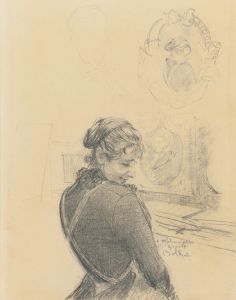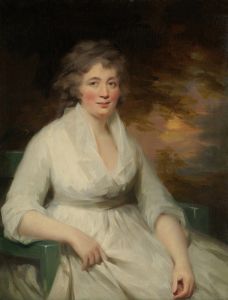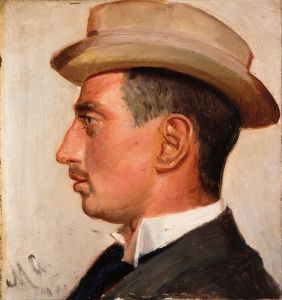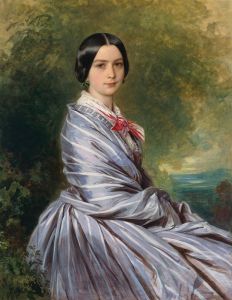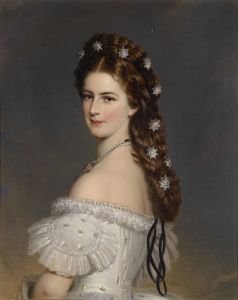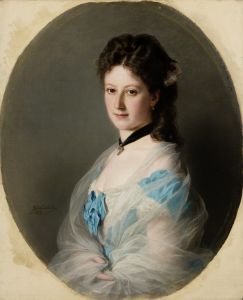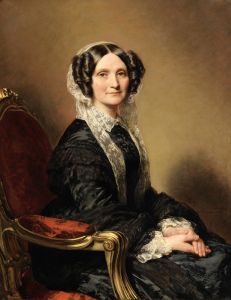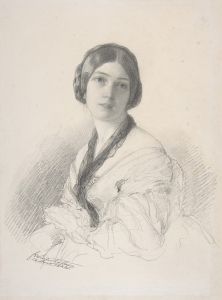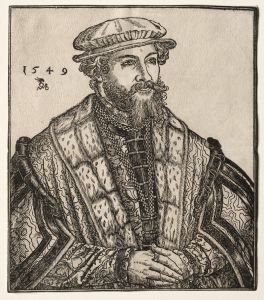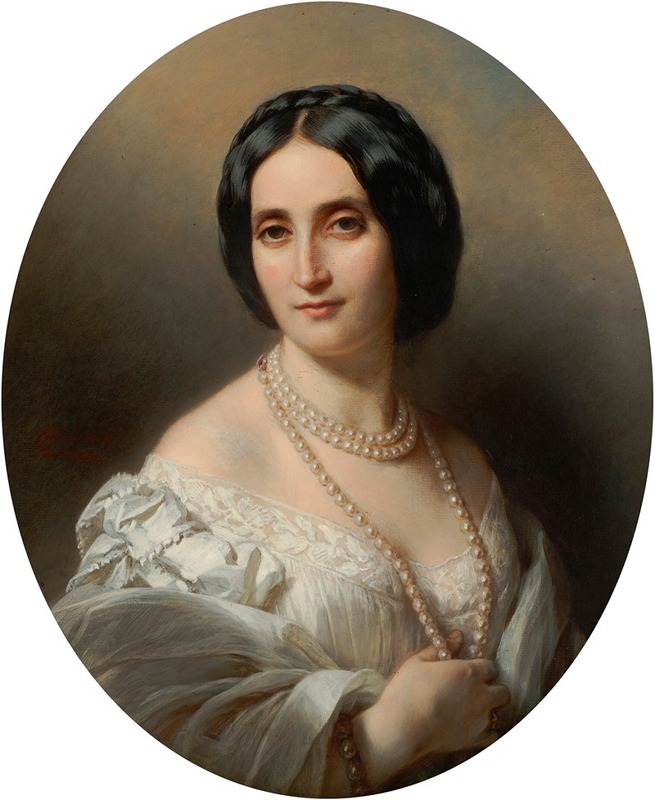
Eugenie, Viscountess Esher, née Mayer
A hand-painted replica of Franz Xaver Winterhalter’s masterpiece Eugenie, Viscountess Esher, née Mayer, meticulously crafted by professional artists to capture the true essence of the original. Each piece is created with museum-quality canvas and rare mineral pigments, carefully painted by experienced artists with delicate brushstrokes and rich, layered colors to perfectly recreate the texture of the original artwork. Unlike machine-printed reproductions, this hand-painted version brings the painting to life, infused with the artist’s emotions and skill in every stroke. Whether for personal collection or home decoration, it instantly elevates the artistic atmosphere of any space.
Eugenie, Viscountess Esher, née Mayer by Franz Xaver Winterhalter is a portrait painted by the renowned German artist Franz Xaver Winterhalter. Winterhalter, celebrated for his skill in capturing the elegance and refinement of 19th-century European aristocracy, was a highly sought-after portraitist among royalty and nobility. This particular painting depicts Eugenie, Viscountess Esher, who was born Eugenie Mayer.
Eugenie Mayer was the wife of Reginald Baliol Brett, 2nd Viscount Esher, a prominent British historian, politician, and courtier. The couple married in 1879, and Eugenie became known as Viscountess Esher following her husband's succession to the viscountcy in 1899. While details about Eugenie Mayer's personal life and background are limited, her marriage to Viscount Esher placed her within the social and political elite of late Victorian and Edwardian Britain.
The portrait is characteristic of Winterhalter's style, which often emphasized grace, opulence, and the sitter's social status. Winterhalter's works are known for their meticulous attention to detail, particularly in the rendering of fabrics, textures, and the overall composition. In this painting, Eugenie is likely depicted in formal attire, reflecting her position within the aristocracy. However, specific details about the setting, attire, or symbolism within the portrait are not widely documented.
The exact date of the painting is not confirmed, but it would have been created during Winterhalter's active career, which spanned the mid-19th century. Winterhalter's reputation as a portraitist extended across Europe, and he worked for numerous royal courts, including those of France, Britain, and Austria. His ability to capture the sophistication and poise of his sitters made him a favorite among the upper echelons of society.
The current location of the painting is not widely recorded in public sources, and it is unclear whether it resides in a private collection, a museum, or another institution. Winterhalter's works are held in various prestigious collections worldwide, including the Louvre, the Royal Collection in the United Kingdom, and other major art institutions.
Due to the limited availability of detailed information about this specific portrait, further research would be required to provide additional context regarding its provenance, commission, and historical significance.





